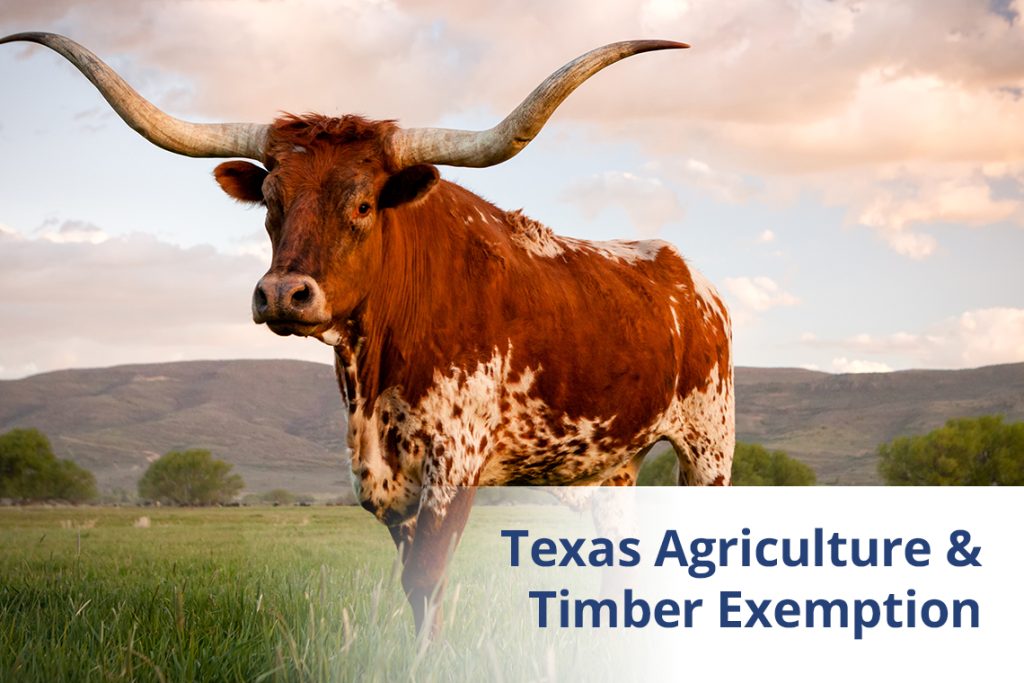How to Claim Your Texas Agricultural & Timber Exemption to Unlock Tax Savings

Here’s what you need to know about claiming the Texas Agricultural and Timber exemption:
- The Texas ag & timber exemption is actually a special appraisal valuing land based on its productivity value, which is often significantly lower than the market value.
- The land must primarily be engaged in qualifying agriculture or timber activities for five of the last seven years. Wildlife management land needs active use in three out of seven specific ways, which will be described in this article.
- Applications must be filed with supporting documents to the county’s chief appraiser before May 1st.
- Losing eligibility and converting the land to non-agricultural use could mean facing a rollback tax for the last three years, with potential interest fees on top.
- Eligible activities can easily be overlooked, leading to a higher property tax bill. Gill, Denson & Company is ready to help you protest your valuation to lower your taxes.
What Is the Texas Agricultural & Timber Exemption?
While many often refer to it as the Texas Agricultural & Timber Exemption, it is not technically an exemption. Rather, it’s a special appraisal that values farm and ranch land based on its productivity value instead of market value. The productivity value is determined by the land’s capacity to produce agricultural or timber products or to manage wildlife. This value is often much lower than the market value, bringing significant property tax savings for eligible farm and ranch landowners.
How Do You Qualify for the Special Appraisal?
The land must meet certain criteria for property owners to be eligible for the special agricultural, timberland, or wildlife management appraisal. The land must have been primarily used for agricultural or timber production for a minimum of five out of the last seven years. Within city limits, it must have consecutive use for at least the last five years. The level of intensity of use (e.g. the number of animals per acre) must be typical for the area. There will typically be a minimum acreage requirement, which varies by county. Qualifying agricultural activities include, but are not limited to:
- Cultivating the soil
- Planting cover crops
- Producing crops, such as cotton, hay, honey, or commercial wood
- Raising or holding livestock, poultry, or fish
- Raising certain exotic animals to produce human food or other commercial-value items
- Cutting wood to be used in fences or structures on neighboring agricultural land
- Leaving the land idle for a government program or for rotating livestock or crops
Wildlife Management Use
Actively using the land to manage wildlife is an acceptable agricultural use if it was previously qualified open-space land or timberland. Wildlife management land must be utilized in at least three of seven specified ways to support the sustainable reproduction, migration, or winter habitation of native wildlife for human benefit. These activities include:
- Creating or promoting a beneficial environment for wildlife
- Minimizing soil erosion to benefit wildlife
- Managing predator populations causing harm to targeted wildlife populations
- Providing supplemental supplies of water
- Providing supplemental supplies of food
- Creating or maintaining natural or artificial structures for shelter
- Making census counts to record populations
Getting and maintaining a special appraisal for agricultural, timberland, or wildlife management use can be challenging. Proper documentation and record keeping of all qualified activities will assist you greatly in proving eligibility.
How to Claim the Special Appraisal
Complete and file a valid application with your county’s chief appraiser to claim the agricultural or timber productivity appraisal. If your property falls under more than one district’s appraisal jurisdiction, you’ll need to file separately in each appraisal district. Submit the 1-d Agricultural Appraisal, the 1-d-1 (Open-Space) Agricultural Use Appraisal, or the 1-d-1 Timber Land Appraisal form with supporting documents to the appropriate district(s) before May 1st.
Some agricultural and timber production may not be as visible to the chief appraiser inspecting your property. This is why it’s so important to keep detailed records of all related activities, such as receipts, contracts, management plans, and industry association memberships.
Losing Eligibility
If agricultural land is changed to non-agricultural use, you may owe a rollback tax covering the last three years when the appraisal was lower. This is the difference between the taxes paid for the land’s agricultural value and what you would have paid for its higher market value. If your land qualifies under Subchapter C or 1-d, you may also owe interest when selling or stopping agricultural use. When purchasing agricultural land for development, it’s important to consider how you might be affected by rollback taxes.
Check with your local county or property tax expert before taking action that might place a significant financial burden on you or the new owner.
How to Maximize Savings & Benefits
The special appraisal process can be complex, with some qualifying activities more difficult to prove. It may be necessary to protest the county’s appraisal of your property if you suspect an unfair assessment. The experts at Gill, Denson & Company can assist you with various personalized strategies to potentially lower your taxes. While we cannot file the special appraisal form for you, we can negotiate a reduction of your property taxes with the county appraisal district. We’ll handle the entire protest process on your behalf, advocating for a fair appraisal of your property, regardless of its purpose – agricultural, timber, or otherwise.
Do you suspect you’re overpaying on your Texas property taxes? The team of experts at Gill, Denson, & Company are ready to help you get the tax breaks you deserve. We offer property tax protest services for residential and commercial properties in all 254 Texas counties.









